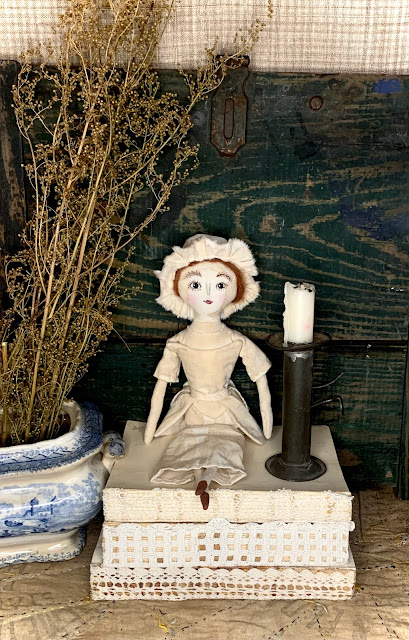About Hilda Dibble
Hilda is a reproduction of a classic cloth doll from the early 1800s, based on a photograph I found years ago in a book of old dolls. I decided to create a similar cloth doll and call my version of her Hilda Dibble.
Hilda is 14 inches tall and wears pantalets, a petticoat, dress, as well as a cape and bonnet. I’ve provided patterns for her body, arms, legs, and her bonnet. Her pantalets, petticoat, and dress are easy to sew, with instructions instead of patterns. There also are instructions for painting Hilda’s face and creating her hair.






































